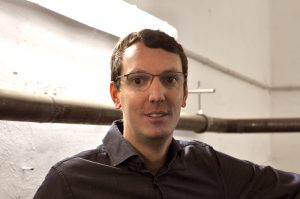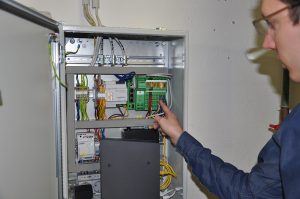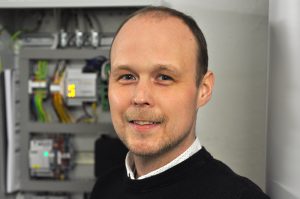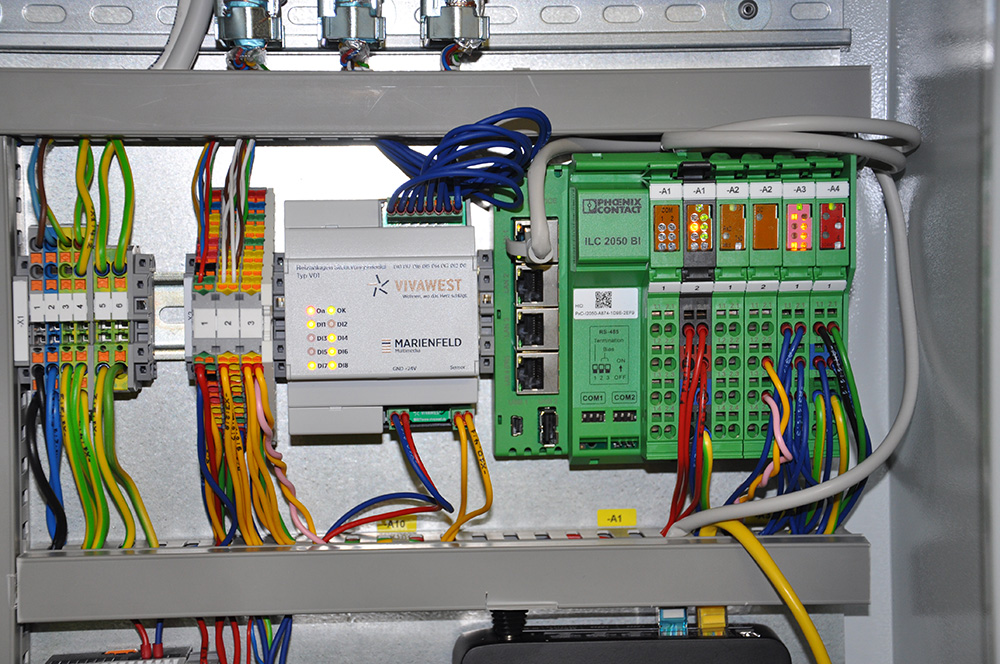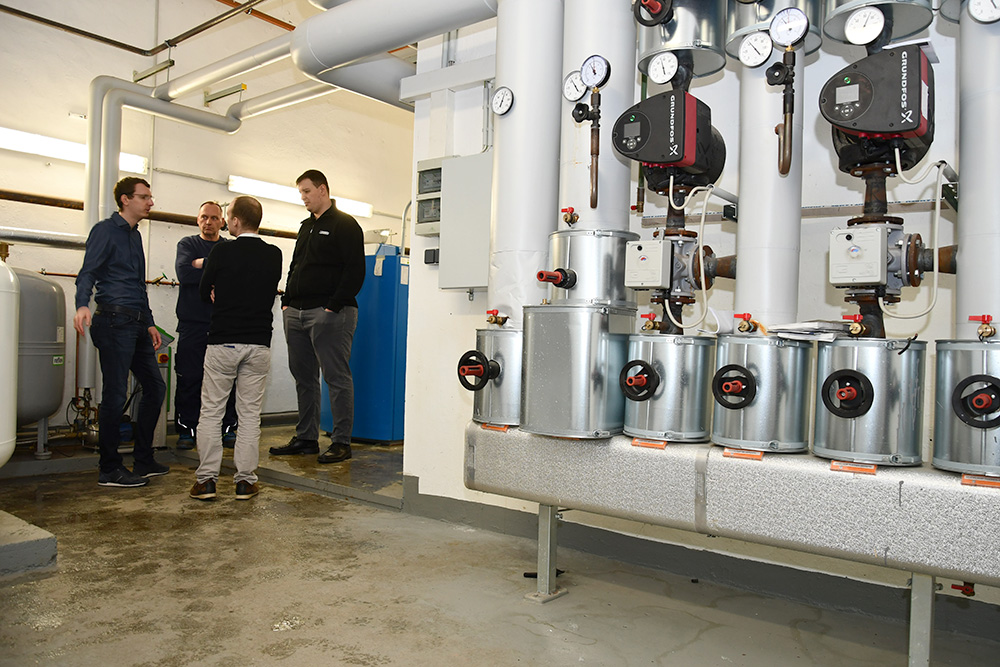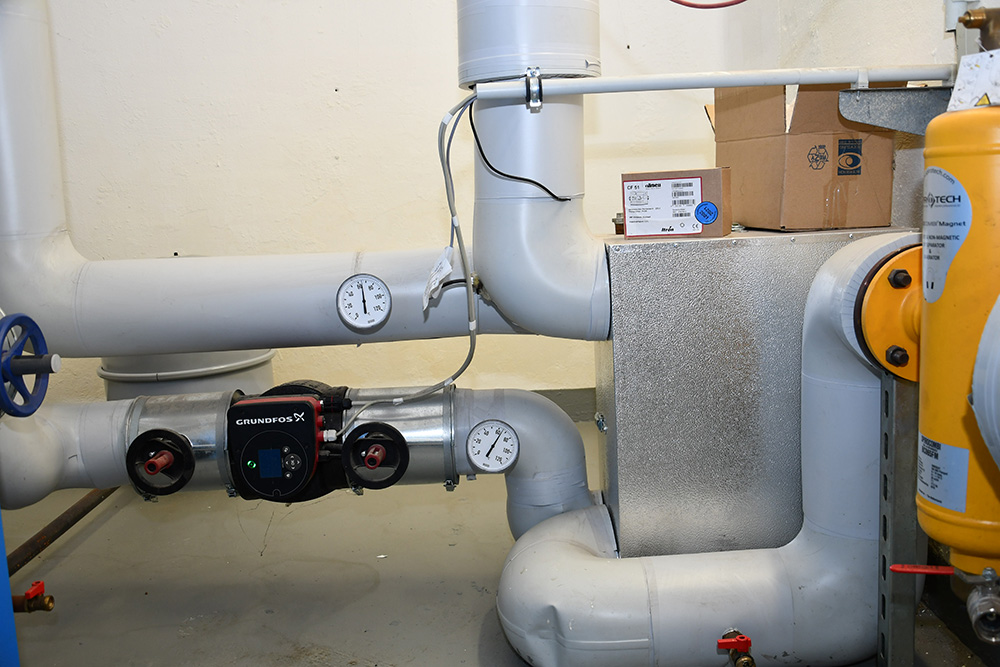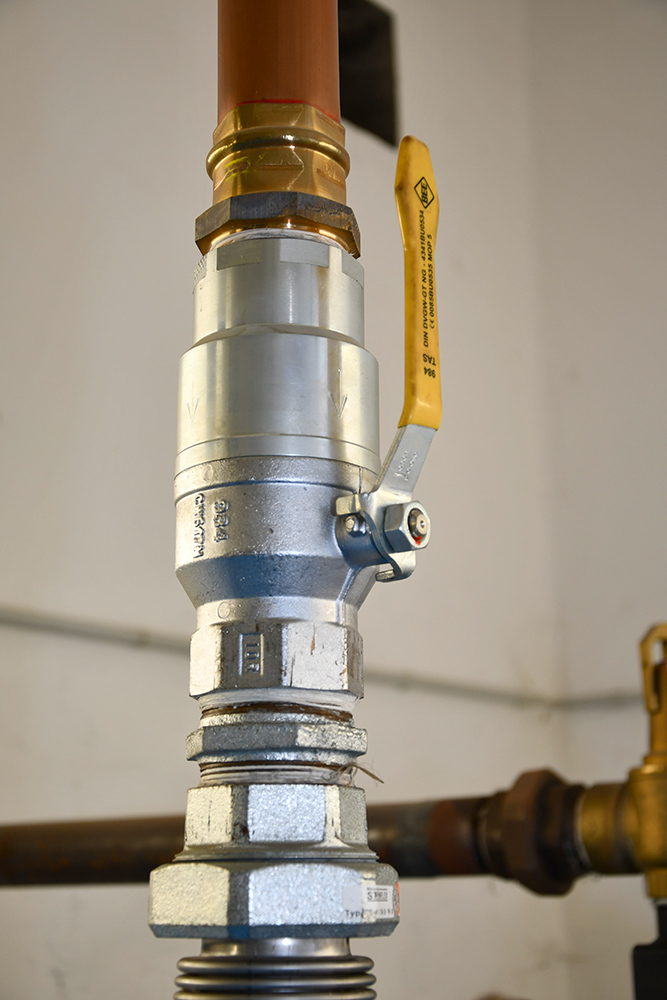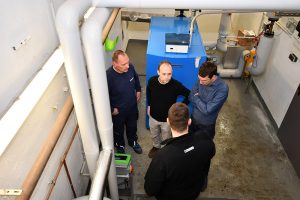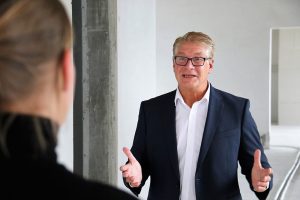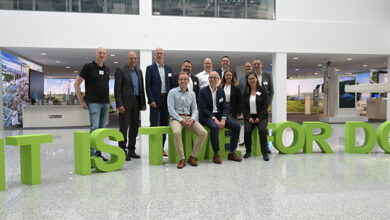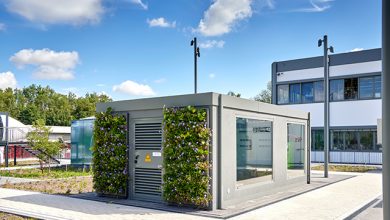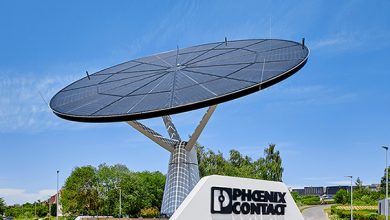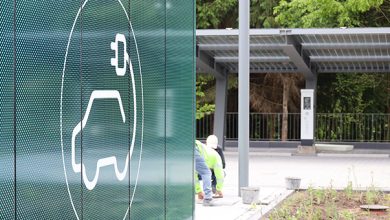It all started with an ingenious trick on the temperature sensor and the right control technology for old oil heating systems. Now, in North Rhine-Westphalia, not only are aging heat generators being modernized, but entire residential districts are being technologically upgraded. This benefits both tenants and the environment.
Dortmund Garden City, in the middle of the Ruhr Valley. A region that used to stand for steel and coal and today stands for structural change and the dawn of modernity. It is precisely this arc of tension that we are on the trail of, even if today’s appointment is about technology and not about mining romanticism.
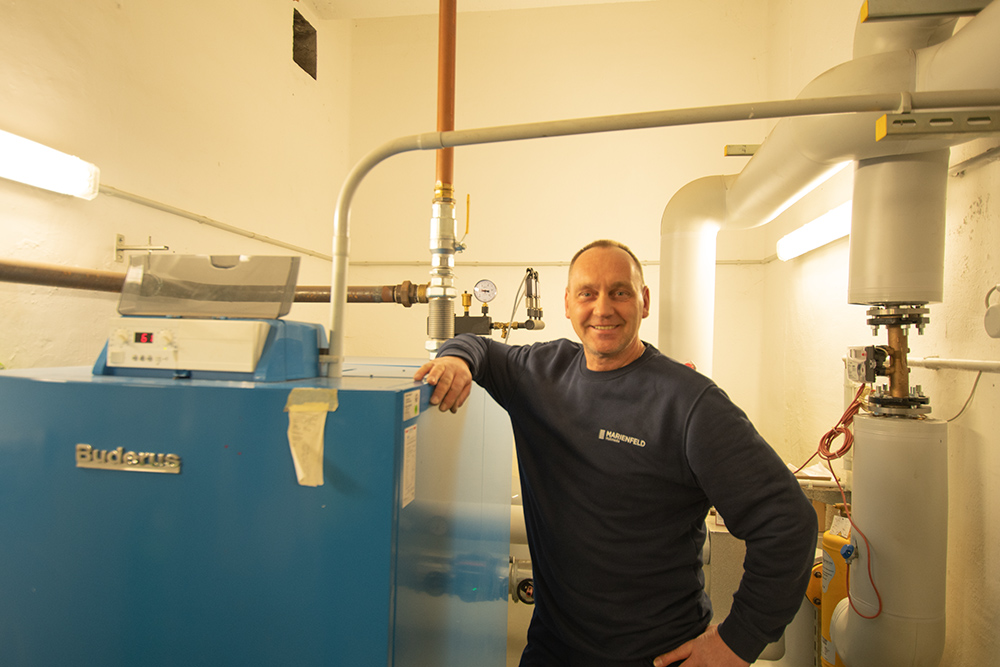
A few steps and a steel door, and we’re standing in the boiler room of a multi-party house. The thick oil burner is comfortably rumbling away. The system, which was installed in 2016, produces a maximum of 320 kW for the heating and hot water supply of 48 residential units with a total area of 5,307 square meters. “Added to this is the same number of two-and-a-half to three-and-a-half-room apartments in the neighboring building,” Wilhelm Risse describes. Willi, as he is called here, is a trained electrician and has been with Vivawest for 21 years. He knows these and many other systems like the back of his hand, because he is one of the service technicians of the Gelsenkirchen-based housing company. Installation and, above all, maintenance are important topics in Risse’s day-to-day work. Because “the heating system has to run, there can’t be any major malfunctions.”
Cold feet versus climate change
But Vivawest is not just a housing company; it also has its own technology departments in various trades. “In addition to equipping our new construction projects with regenerative energy supplies, we are starting to replace fossil fuels such as oil and gas in our portfolios in the long term with a combination of air-source heat pumps and photovoltaic systems. However, due to the still high proportion of oil and gas heating systems in our neighborhoods, this is a task for the coming decades. It is therefore worth making these heating systems more efficient as well,” says Manuel Romberg. He is a site manager at Vivawest and is responsible for digitalization. “We were looking for ways to make the inherently analog oil and gas heating systems of older design more energy-efficient. In other words, to make a quasi-dumb heating system smarter. And came up with the idea of using the signal transmitter of the outdoor temperature sensor for this purpose.”
This sensor typically measures the outside temperature to control the heating system so that it is turned down in summer conditions and raised accordingly in winter. “We have developed our own control system that acts on the heating system via this channel. We combine the data from several outdoor sensors to get a centralized reference. This allows us to adjust the systems to the actual temperatures.” It is not without pride that Manuel Romberg points to the control box in which the control with the Vivawest logo has found its place on the top-hat rail. “We have also already patented this heating system control.”
Make dumb heating smart
Although the electrical engineering graduate already knew Phoenix Contact beforehand, the contact intensified during a project in which the level monitoring of tank systems was digitized. “At that time, Phoenix Contact not only supplied us with components and advised us, but also worked together with our technicians to find solutions to problems in the specific applications,” Romberg describes the first steps of the cooperation.
Oliver Helemann is one of the experts at Phoenix Contact when it comes to building automation. He has been supporting the North Rhine-Westphalian housing company since the first tender beginnings of the collaboration. “Vivawest didn’t even know what we were actually capable of at first.” But that quickly changed. The experts have already worked together on the development of the heating system control.
“The heart of the system is a building controller. This IoT controller is connected to heating systems, gas meters and heat meters in the respective boiler rooms. In addition, the heat cost allocators are also connected. All relevant data is collected and forwarded via the Internet to our central IoT management platform Emalytics, where it is processed and can be used for operational monitoring and control of the heating system as well as for remote meter reading. Adjustments to settings are made in real time. This allows for a quick response in case of temperature adjustments.”
The solution developed by Vivawest and Phoenix Contact can be used regardless of the manufacturer, type and age of the existing heating systems. This means that old systems can be supplemented with modern control methods – for example, weather forecasts – and thus realize energy savings immediately after the technology is installed. In the first field test with 400 heating systems, energy savings of around twelve percent were achieved through central control of the heating systems.
For classification: As one of the leading housing companies in North Rhine-Westphalia, Vivawest manages almost 120,000 apartments in around 100 communities on the Rhine and Ruhr and provides a home for around 300,000 people. And so the twelve percent CO2 savings quickly reach industrial dimensions.
Climate neutral home
Manuel Romberg places the developments in a larger context: “By 2045, the building stock in Germany is to be climate-neutral – in other words, no longer produce any CO2. To achieve this goal set by the German government, our new buildings will have to be energy-efficient anyway. And in existing buildings, further steps are needed in energy modernization to help increase efficiency and reduce final energy requirements. In this context, digital building management (DGM) will play an important role in reducing energy consumption and thus also operating costs for our tenants.”
Based on the positive experience from the first field test, 300 additional heating systems have now been equipped with the IoT controller from Phoenix Contact. This was preceded by a joint further development of the management platform for controlling and automated optimization of the systems, so that the responsible Vivawest employees are able to use it much more conveniently and on their own for the desired purposes. The aim is also to drive forward the automation of operations management and develop further applications.
Heat is the key
As Director Global Industry Management, Bernhard Tillmanns heads the Building Technology division at Phoenix Contact. The experienced automation expert outlines the prospects for the housing industry: “The heat supply accounts for 70 to 80 percent of the energy demand in buildings. Therefore, when we talk about the energy turnaround in buildings, the focus is on heat. Therefore, the automation concept in neighborhood development must be heat-focused and not electricity-focused.”
However, further steps are needed to achieve the ambitious goals of climate neutrality. “Without sector coupling, the climate targets in the building sector cannot be achieved,” Tillmanns is certain. “That’s why the automation processes must also extend to electricity generation and consumption. Photovoltaics and heat pumps will be integral parts of buildings in the future. Energy storage systems will be needed to make sensible use of the electricity generated. On the one hand, the systems for heat generation will need electricity, and on the other, we will also have to integrate the infrastructure for electromobility into the buildings, for example in the underground garages of apartment buildings. So the grid connection technology is also part of the overall concept.
Sector coupling instead of silo thinking
That is why we at Phoenix Contact think beyond the individual building. A building can also be automated to serve the grid by integrating negative control energy. For example, if there is too much renewable electricity in the grid, storage facilities can be charged or some heating and cooling processes can be controlled in such a way that the oversupply is cushioned. Such an approach is of course also an option in the context of energy optimization of a neighborhood. That’s why, for us, a neighborhood solution always includes networking the buildings.”
Tillmanns is certain that he can offer exactly the right tools for this purpose: “The Emalytics management platform used here offers more than just the connection, automation and optimization of existing conventional heating centers. The IoT-based management system also integrates renewable energy generators such as photovoltaics and heat pumps or e-mobility charging infrastructures into a holistic operating system, regardless of the manufacturer. In this way, Vivawest is prepared to actively shape the energy transition in its properties.”

“And this will ensure that our tenants don’t get cold feet in the future,” Wilhelm “Willi” Risse is pleased to say.
